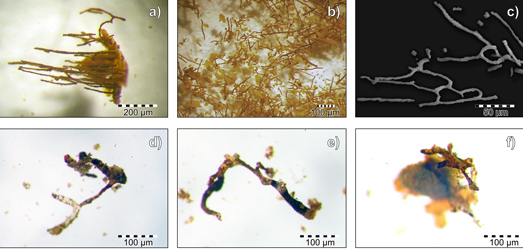Proteins Identified in Blood Vessels
A team of Polish scientists including researchers from the Polish Academy of Sciences have published a paper detailing the potential discovery of organic materials including collagen inside the fossilised bones of ancient reptiles that once roamed the coastline of the Tethys Ocean.
Triassic Fossils Studied
Writing in the on-line, open access journal “PLOS One”, the researchers used a variety of highly sophisticated analytical methods to identify the minute quantities of organic material inside the preserved blood vessels within limb bones of Nothosaurs and preserved within the back bone (centrum) of a bizarre, long-necked reptile (Protanystropheus).
Mineralised Blood Vessels (High Magnification) but Tubular Structure is Maintained
Picture credit: PLOS One
X-ray Photo-electron Spectroscopy (XPS)
The research methods used included X-ray photo-electron spectroscopy (XPS), an environmental scanning electron microscope (ESEM) and fourier transform infrared spectroscopy (FTIR). Some of the blood vessels even retained their tubular appearance under extreme magnification, quite remarkable when the fossils have been dated to around 247 million years ago (Early Triassic). This discovery provides the oldest evidence to date of the preservation of complex organic molecules within vertebrate fossils excavated from marine sediments.
For models and replicas of Triassic prehistoric animals and other extinct creatures: CollectA Age of Dinosaurs Popular Figures and Replicas.
Explaining the significance of the team’s findings, one of the authors of the scientific report, Dr Andrzej Boczarowski (Faculty of Earth Science, University of Silesia) said:
“Among other proteins, we managed to find collagen, one of the most important proteins in the bodies of animals in general and vertebrates in particular.”
Members of this research team, had some years earlier, identified potential organic material in the fossilised bones of dinosaurs excavated from sites in the Gobi Desert.
Increasing Evidence from Triassic Fossils
Despite many similar results having been dismissed due to contamination during sampling or due to the presence of bacteria skewing the results, there is a growing body of evidence to suggest that some organic traces of long extinct creatures can persist in the fossil record, especially if the fossilisation process occurs rapidly.


